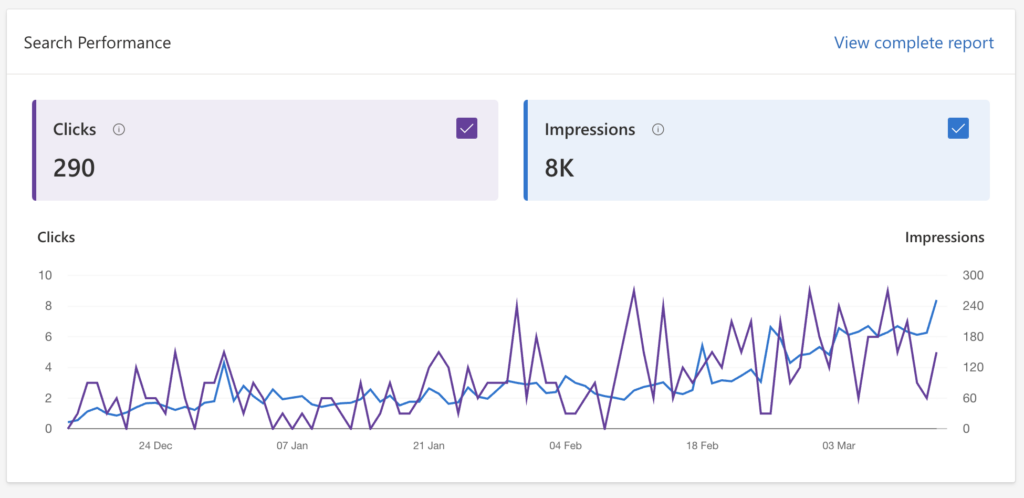Launching a new website in 2024 requires a comprehensive SEO checklist to enhance visibility and engine rankings.
Key components include adhering to a technical SEO checklist for optimizing loading speeds and ensuring Google’s mobile-friendly standards are met.
The objective is to create high-quality content that resonates with target keywords, bolstered by a solid on-page SEO checklist.
Such groundwork lays a foundation for digital marketing success, increasing chances of ranking in a highly competitive digital space.

How to Use The SEO Checklist
I’ve broken my checklist down for you into sections to cover the main areas of Search Engine Optimization as follows:
- The SEO Basics Checklist
- Keyword Research Checklist
- On-Page SEO Checklist
- Technical SEO Checklist
- Content Checklist
- Link Building Checklist
- Off-Page SEO Checklist
For a holistic SEO strategy, it helps to focus on all of the above to follow SEO best practices.
SEO Basic Checklist: Creation of New Website to Going Live
Embarking on a new website venture begins with grasping SEO basics. These fundamentals are crucial for ensuring your site is optimized for search engines from the outset, leading to better visibility and a stronger online presence.
Selecting a Secure and SEO-Friendly Hosting Provider
Choosing the right hosting provider is pivotal for SEO success. It should offer robust security features, reliable uptime, and giving, all of which contribute to an SEO-friendly environment for your website’s growth.
Worthy Note 🗒: The Role of HTTPS in SEO
Implementing HTTPS is essential for securing internal links and boosting SEO. Search engines favor secure websites, and HTTPS is a critical factor in providing a safe browsing experience, giving you an edge in rankings.
Choosing the Right Domain Name for SEO Impact
A domain name that reflects your business and includes target keywords can significantly affect SEO. It’s the first indicator to search engines and users alike of what your site is about, making it a crucial decision in your SEO strategy.
Worthy Note 🗒: Canonicalization and Preventing Duplicate Content Issues
Addressing canonicalization and preventing duplicate content is vital for SEO. Implementing schema and structured data clarifies content hierarchy, which helps maintain a clean backlink profile and ensures that creating content is focused and effective.
Implementing an SEO-Friendly Content Management System
An SEO-friendly CMS is indispensable for managing duplicate content. It should allow for easy optimization of meta tags, content, and URLs, fundamental elements of a solid SEO strategy.
Worthy Note 🗒: Features to Look For in a CMS
When choosing a CMS, look for features that support SEO efforts, such as easy generation of XML sitemaps, clean URL structure, and seamless integration with SEO plugins and tools.
Setting up Essential SEO Tools and Plugins
Practical SEO efforts rely on the right tools and plugins, from SEO plugins facilitating on-page optimization to paid tools and keyword research tools like the Keyword Magic Tool.
These resources are indispensable for refining your strategy. You can also add the following helpful tools:
Integrating Google Search Console and Analytics
Google Search Console and Analytics integration is crucial for monitoring website performance. Furthermore, these tools are powerful and free to use. It is designed to track your site performance using Google Search and is packed with useful features:
- Check to see what keywords bring the most traffic.
- Fix website errors
- Submit your sitemap
- Check the page experience score and more
Pro Tip: Connect your Google Search Console with your Google Analytics to get helpful information inside your Google Analytics account.
Bing Webmaster Tools

While Bing is not as popular as Google, it does get around 1 billion visitors in a month, and it is worth optimizing your site for it using the Bing Webmaster Tools. It also has some great features, like the keyword research tool.
For WordPress Users, Install and configure an SEO Plugin
Installing an SEO plugin will make optimizing your site, especially on WordPress, more accessible for search engines. It will also help you with your technical SEO facest, like using XML sitemaps and robots.txt.
Here are some popular ones you can consider:
Keyword Research Checklist: Laying the Foundations
A solid keyword strategy is the cornerstone of any successful SEO campaign. It involves understanding and aligning with webmaster guidelines and accurately gauging keyword difficulty to optimize content for search relevance and discoverability.
Conducting Thorough Keyword Research
In-depth keyword research lays the groundwork for SEO success. It involves identifying the correct terms that align with user intent and have the potential to drive targeted traffic to your website.
Identifying Primary Keywords and Search Intent
The process of identifying primary keywords revolves around understanding search intent. This ensures that the content you create meets the needs and questions of your audience, thereby improving your site’s relevance and authority.
Join 900+ to receive a weekly SEO video from my YouTube channel, which I’ll share, and an actionable SEO tip every week.
Exploring Long-Tail Keywords for Niche Targeting
Long-tail keywords play a crucial role in niche targeting. They allow for specific, targeted content strategies that cater to a dedicated audience segment’s nuanced needs and queries.
Tools to Discover Long-Tail Opportunities
For comprehensive SEO efforts, leverage paid tools and SEO plugins designed to uncover long-tail opportunities. Tools like the Keyword Magic Tool are instrumental in discovering niche phrases that can drive specific and qualified traffic to your site.
Analyzing Competitors’ Keyword Strategies
One must study the competition’s keyword tactics to grasp the battlefield of SEO. Investigating rival websites’ structured data and backlink profiles can yield insights that refine one’s keyword approach.
This includes identifying gaps in their strategies that you could exploit and understanding the keyword clusters they are targeting. Implementing schema markup, as they have, can also enhance your site’s visibility in search results.
Worthy Note 🗒: Leveraging Competitor Insights for Keyword Selection
Using competitor analysis tools, you can uncover the keywords driving traffic to their sites. This knowledge aids in creating content that competes effectively.
It’s about the keywords they rank for and how they map them to their content.
Observing their content creation efforts can provide a blueprint for structuring your keyword mapping and optimization processes.
Crafting a Keyword Map for Your Website Content
Keyword mapping is crucial in organizing your site’s content to meet search engine requirements. It involves assigning relevant keywords to specific pages, ensuring that each piece of content targets distinct and relevant search queries.
This practice prevents keyword cannibalization and bolsters your content’s chances of ranking well. The map should align with the user’s search journey, guiding them through your site with intent-driven content.
Worthy Note 🗒: Aligning Keywords With User Journeys
Effective keyword mapping aligns closely with user journeys, connecting each search query with the most appropriate page.
By understanding the searcher’s intent, you can tailor your content to answer their questions or provide solutions, thereby increasing the likelihood of converting organic traffic into customers.
This alignment ensures that your content serves users’ needs at every stage of their journey, from awareness to decision-making.
Identify Low Competition Keywords
Using something like KWFinder is a great tool. It is a freemium keyword research tool that provides tons of data on your keyword. It also displays a keyword’s search volume, difficulty, trends, estimated visits, and CPC. You can choose low-competition keywords that will easily rank.

On-Page SEO Checklist: On-Site Optimization Techniques
Great! Now that you have all the tools available and your websites designed, it is time to optimize the content using on-page SEO methods so that Google Search Console can index your content and find it.
On-site optimization is a suite of techniques to make your website more appealing to search engines and users. It starts with the foundation of a solid keyword strategy and extends to the meticulous crafting of meta tags.
Each page should be optimized for maximum visibility and engagement. This includes SEO-friendly URLs, compelling title tags and meta descriptions, and high-quality, keyword-rich content that resonates with users and search engine crawlers.
Structuring URLs for Maximum SEO Benefits
URLs are more than just web addresses; they are opportunities for engine optimization.
A well-structured URL indicates a page’s content to search engines and can significantly impact a site’s SEO performance.
It should be concise, include relevant keywords, and follow a logical hierarchy that mirrors the site’s structure, enhancing user experience and search engine crawling.
Best Practices for SEO-Friendly URLs
For SEO-friendly URLs, it’s best to use clear, descriptive words that reflect the page’s content. Shorter URLs are preferable, and including target keywords can improve search visibility.
It is also essential to use hyphens to separate words, avoid unnecessary parameters, and maintain a consistent structure across the site to help users and search engines navigate your content efficiently.
Crafting Compelling Meta Titles and Descriptions
Meta titles and descriptions are essential elements of SEO that influence click-through rates from search engine results pages.
The title should accurately and enticingly reflect the page’s content, using primary keywords to improve visibility.
The meta description summarizes the content, encouraging users to click through with a clear call to action and relevant keywords.
Worthy Note 🗒: Importance of Meta Tags in SEO
Meta tags play a significant role in SEO as they communicate directly with search engines, providing information about a page’s content.
Well-crafted title tags and meta descriptions can positively impact a site’s search engine rankings and user engagement.
They act as a first impression, influence click-through rates, and are crucial for conveying a page’s relevance to users and search engines.
Enhancing Content With Strategic Keyword Placement
Strategic keyword placement is vital for enhancing content and bolstering SEO.
It involves naturally incorporating relevant keywords within the text, titles, and headings while ensuring the content remains engaging and readable.
This practice helps rank targeted terms and aids in building a cohesive backlink profile, as external sites are more likely to link to valuable and relevant content.
Balancing Keyword Density and Readability
While keywords are crucial for SEO, it is essential to balance density with readability.
Overstuffing content with keywords can lead to a negative user experience and potentially trigger keyword cannibalization issues.
The goal is to integrate keywords in a natural way that provides value to the reader.
Thus, the content will maintain its integrity and readability while still signaling relevance to search engines.
Optimizing Images With Alt Text and File Names
Image optimization is a crucial aspect of SEO that should not be overlooked. Alt text provides a textual alternative for images, aiding in accessibility and allowing search engine crawlers to understand the image’s content better.
Choosing descriptive file names and incorporating relevant keywords can boost visibility in Google Images searches. Both practices contribute to a more inclusive and searchable web presence.
Improving Page Load Speed With Image Optimization
Image optimization is crucial in improving page load speeds, one of the many ranking factors that search engines consider.
Compressing images, choosing the correct format, and using responsive images can drastically reduce load times.
Faster loading pages improve user experience, reduce bounce rates, and can lead to higher search engine rankings, all contributing to better SEO performance.
Implementing Internal Linking Strategies to Boost SEO
Effective use of internal links can significantly boost a website’s SEO. By strategically linking related content within the site, web admins can guide users to additional relevant information, increasing the time spent on the site and enhancing the overall user experience.
Optimizing Anchor Text for Internal Links
Optimizing anchor text for internal links involves choosing the right words to link to other pages.
Maintaining a natural flow while indicating the linked page’s content is essential.
Using relevant, descriptive phrases helps users and search engines understand the context of internal and external links, improving the site’s SEO status code.
Implementing External Linking Strategies to Boost SEO
As necessary as it is to link internally, you must also use external links. Link to at least five authority sites in your content, like Google.com or Wikipedia.
Technical SEO Checklist: SEO Adjustments
Technical SEO encompasses the behind-the-scenes adjustments that ensure a website meets the technical requirements of modern search engines.
It includes optimizing the site’s structure, enhancing mobile usability, and ensuring fast page load times.
SEO tools like Google PageSpeed Insights and Screaming Frog can help identify issues like crawl errors, manual actions, and thin content, which can be rectified to improve overall site performance.
Ensuring Fast and Responsive Page Load Times
Fast and responsive page load times are essential for a positive user experience on mobile devices and are a key component of SEO.
Search engines prioritize sites that load quickly, as speed aligns with the searcher’s intent to find information efficiently.
Employing techniques like optimizing images, minifying code, and leveraging browser caching can significantly reduce load times and improve site performance.
Tools to Measure Site Speed
A variety of SEO tools are available to assess website performance. Google PageSpeed Insights is a popular choice, providing detailed reports on Core Web Vitals and critical metrics for user experience.
Tools like GTmetrix and Pingdom also offer comprehensive analysis, including suggestions to improve site speed. Regularly checking these metrics can help avoid crawl errors and negative impacts from manual actions, ensuring optimal mobile usability.
Implementing Mobile-Friendly Design Principles
With mobile-first indexing now the norm, implementing responsive design is essential.
This approach ensures that a website adapts seamlessly to various screen sizes, providing an optimal viewing experience on all devices.
Responsive design improves user engagement and contributes positively to SEO, as search engines favor mobile-friendly websites.
Testing Your Site’s Mobile Usability
Testing a website’s mobile usability is crucial for maintaining its SEO ranking.
Tools like Google’s Mobile-Friendly Test allow web admins to identify issues that could impact user experience on mobile devices.
Addressing these issues promptly ensures a website complies with mobile usability standards and performs well in search results.
Creating and Optimizing Your Sitemap and Robots.txt File
Creating a well-structured sitemap facilitates search engine bots in indexing a website’s content efficiently.
Including language versions in the sitemap can also aid in international SEO.
The robots.txt file guides these bots by specifying which parts of the site to crawl or ignore, optimizing the crawling process.
Submitting Your Sitemap to Search Engines
Once a sitemap is created, submitting it to search engines is straightforward. SEO tools like Google Search Console let webmasters directly inform search engines of their website’s structure, ensuring all necessary pages are discovered and indexed correctly.
Identifying and Fixing Crawl Errors and Broken Links
Identifying and resolving crawl errors and broken links is vital for maintaining a healthy website.
SEO tools like Screaming Frog can help web admins detect and fix broken links, improving the site’s overall user experience and supporting the integrity of its link structure.
Worthy Note 🗒: Regular Monitoring for Technical Health
SEO tools are indispensable for regularly monitoring a website’s technical health.
They can alert web admins to manual actions taken by search engines and other critical issues.
Consistent checks help ensure the website complies with SEO best practices and functions smoothly for users and search engines.
Content Checklist: Content Development
Content development and on-page optimization are pivotal in attracting and engaging visitors and in being favorably indexed by search engine bots.
This involves creating relevant, valuable content and optimizing elements like titles, headings, and meta descriptions to align with targeted search queries.
Writing Quality Content That Addresses User Needs
Addressing user needs through quality content is fundamental to SEO success.
This includes updating outdated content to ensure that information remains current and valuable.
Focusing on relevance and utility will satisfy readers and signal the site’s commitment to providing a high-quality resource to search engines.
Also, break up your content into chunks to make it readable for users.
Worthy Note 🗒: The Importance of E-A-T in Content Creation
Expertise, Authoritativeness, and Trustworthiness (E-A-T) are crucial factors in content creation. Demonstrating these qualities within content helps build credibility with users and search engines. It potentially leads to higher rankings and greater user engagement.
Utilizing Structured Data to Enhance SERP Appearance
Structured data, like schema markup, is a powerful tool for improving a website’s appearance in Google search results. Implementing this data helps search engines understand the content context, potentially resulting in rich snippets that stand out in the SERPs, thereby increasing click-through rates.
Schema Markup Types and Implementation
Different types of schema markup can be implemented to communicate specific information about a website’s content to search engines. From articles and events to products and recipes, schema markup enhances the display of search results, making them more informative and attractive to users.
Use Multimedia
Posts containing many images, videos, and other multimedia provide better content and help your content rank better. Use charts, infographics, videos, photos, and visual content to make your content stand out. These all play an essential part in link building.

Link Building Checklist: Building Domain Authority and Trust
Building domain authority and trust is a long-term endeavor that involves acquiring high-quality backlinks, producing authoritative content, and maintaining an active social media presence. These efforts lead to a stronger reputation, better rankings, and increased trust from users and search engines.
Acquiring High-Quality Backlinks
Securing high-quality backlinks is critical for SEO success.
They signal to search engines that other websites consider your content valuable. A strong backlink profile can significantly enhance your site’s authority and rankings.
Focus on earning these links through reputable sources that align with your industry. They contribute to a robust and influential online presence.
Techniques for Effective Link Outreach
Effective link outreach involves personalized communications with web admins and content creators.
You can offer them valuable content that their audiences will appreciate. This process may include guest blogging, collaborating on content, or helping them fix broken links with a replacement from your website.
It’s a strategic way to earn backlinks and build relationships while improving the web ecosystem.
Managing and Monitoring Your Backlink Profile
Regularly managing and monitoring your backlink profile is essential to maintain a healthy website. Utilize SEO tools to track the backlinks you gain and evaluate their quality.
This practice will help ensure that your site is associated with credible and relevant sources, bolstering your SEO efforts and safeguarding your site’s reputation in the long term.
Worthy Note 🗒: Identifying and Disavowing Toxic Backlinks
Not all backlinks are beneficial; some can be toxic, harming your site’s SEO. Use tools to identify harmful links and disavow them through Google Search Console.
This action tells search engines to ignore these backlinks, protecting your site from potential penalties associated with unsavory links and keeping your backlink profile clean and effective.
Off-Page SEO Checklist
While the above SEO checklists are the cornerstone of ensuring you rank on the SERPs, there are some other essential things you can do:
Local SEO and Geographic Targeting
Local SEO is a powerful strategy for businesses looking to reach customers in specific geographic areas.
It involves optimizing your site for local search queries and ensuring your business appears prominently in local search results.
This could include targeting local keywords, optimizing for Google Maps, and building a local online presence.
Claiming and Optimizing Your Google Business Profile
Claiming and optimizing your Google Business Profile is fundamental to local SEO.
This profile is displayed in Google Search and Maps, helping customers find your business and learn about your services.
Provide accurate information, including hours, location, and services, to enhance your site’s performance in Google’s local search results.
Worthy Note 🗒: Importance of Consistent NAP Details Across the Web
Maintaining consistent Name, Address, and Phone number (NAP) details across the web is crucial for local SEO. Inconsistencies can confuse search engines and reduce your visibility in local search results.
Ensure your NAP is uniform across all platforms to maximize your organic traffic and enhance your business’s credibility in the eyes of both search engines and users.
Targeting Local Keywords and Building Local Citations
Targeting local keywords can improve your Google rankings, especially for searches with transactional intent.
Use keyword data to identify terms that potential customers in your area are searching for.
Additionally, building local citations, which mention your business on other websites, serves as a ranking signal that boosts local SEO.
Worthy Note 🗒: Strategies for Local SEO Success
Local SEO strategies include optimizing your website for location-based keywords, creating location-specific content, and acquiring citations from local business directories.
Consistency in your online information and engaging with local communities can further enhance your visibility and credibility, leading to better performance in local search results.
Optimizing for Multi-Regional and Multilingual Content
Optimizing your website for multiple regions and languages can help you reach a broader audience.
Create tailored content that resonates with different cultural contexts and linguistic nuances.
This approach can significantly improve the user experience for visitors from various parts of the world and boost your global SEO efforts.
Worthy Note 🗒: Setting Up Hreflang Tags for International SEO
Implementing hreflang tags is essential for multi-regional and multilingual websites.
These tags provide search engines explicit instructions on which language and regional URL to show in search results.
Setting up hreflang tags correctly ensures that users see the most relevant version of your site, improving their experience and your international SEO.

Performance Tracking and KPIs
Monitoring your SEO performance is critical to understanding the impact of your strategies.
Use key performance indicators (KPIs) to measure success, track progress, and identify areas for improvement.
Regular analysis allows for data-driven decisions, ensuring that your SEO efforts align with your business objectives and market dynamics.
Setting and Tracking SEO Goals With Key Performance Indicators
Identify and set specific SEO goals, then track them using KPIs such as organic traffic, conversion rates, and rankings.
Utilize SEO tools to get insights into your site’s performance, including how often it’s crawled and indexed, and to detect any manual actions that may affect your rankings.
This data helps in refining your SEO strategies for better outcomes.
Worthy Note 🗒: Essential SEO Metrics to Monitor
Monitoring the right SEO metrics is crucial for gauging your website’s performance. Key metrics include organic traffic levels, bounce rate, conversion rates, keyword rankings, and page load time.
Additionally, monitor click-through rates from search engine results pages (SERPs) and be vigilant for manual actions from search engines, which can drastically affect visibility.
SEO tools can provide valuable insights into these metrics, helping you to understand and refine your SEO strategy.
Regularly Auditing Your Website for SEO Improvements
Regular SEO audits are essential to maintain and improve your website’s search engine rankings.
These audits help identify issues holding your site back, such as broken links, slow-loading pages, or outdated content.
By conducting periodic audits, you can avoid potential problems and optimize your website for search engines and users.
Tools for Comprehensive SEO Audits
Several tools are available to analyze your website’s performance in detail for a comprehensive SEO audit.
These tools can check technical issues, on-page optimization, backlinks, and content quality.
They provide actionable insights that can guide your SEO efforts, helping to ensure that your website meets the latest search engine standards and best practices.
Wrap-Up: SEO Checklist
When optimizing a new website for search engines, the goal is to invite Google to index the site effectively, ensuring visibility in search results. Achieving this requires a holistic SEO strategy that blends technical savviness with quality content creation.
Remember, SEO is not a one-time task but an ongoing endeavor that adapts to the ever-evolving landscape of search engine algorithms and user behavior. Utilizing tools like Google’s PageSpeed Insights tool can provide invaluable feedback on a site’s performance.


